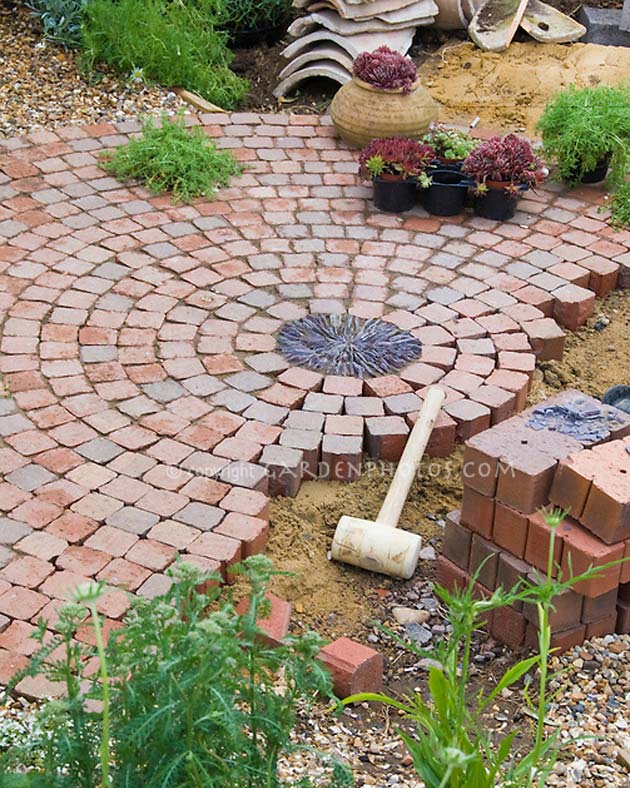Garden Bricks

Garden bricks
CHOOSE THE RIGHT BRICKS FOR YOUR GARDEN WALL
- Extruded or Wire-Cut Clay Bricks. Best for a smooth finish.
- Soft Mud Bricks. Best for an earthy, textured finish.
- Reclaimed Bricks. Best for replicating an original building.
- Concrete Bricks. Best for being resistant to the elements.
What are bricks called in landscaping?
Use pavers — also known as patio stones, stepping stones or brick pavers — to create patios and walkways. Some pavers have designs molded into them, giving the appearance of several small stones in one paver. These let you create patterns simply and quickly.
How do you lay garden bricks?
It's best to make curves gentle as it's easier to edge. But if you are edging a corner run a mason's
How much is landscape brick?
Brick. Brick is a popular choice with homeowners because it's easy to work with and relatively inexpensive. Brick edging costs between $2 to $3 per square foot, plus $5 to $10 per square foot for labor and installation, putting the total cost at $7 to $13 per square foot.
What is the cheapest material to build a garden wall?
Bricks are the cheapest material and come in a range of colours, depending on the type of clay they're made from and the manufacturing process. They can also be multi-coloured or mottled, and have a rough or smooth texture.
Why is brick no longer used?
The shift away from structural brick began after World War II. Mid-century consumers wanted suburban homes that looked distinct from their urban counterparts and newer building codes no longer required brick. That, meant less demand for both the material and the masons needed to install it.
Can you lay brick on dirt?
Bricks can be laid on dirt as long as the ground is prepared properly. Bricks are often used to make patios or paths, but if you are laying bricks on dirt you have to make sure that the ground under them is properly prepared.
Can you use regular bricks for landscaping?
Bricks are versatile and easy to use, making them a popular choice of edging for lawns, paths and garden beds. They're available in many colors, sizes and textures. Brick edging creates an attractive border for your prized garden or landscaping project.
What are 3 types of bricks?
There are three main types of bricks - facing bricks, engineering bricks and common bricks.
How do you get landscape bricks to stay in place?
Once you're satisfied with the position of a brick use a rubber mallet to tap it in place until it's
Can I lay pavers directly on soil?
Lots of questions come up regarding how to lay pavers on dirt, however, it is not recommended to lay pavers directly on dirt or any unprepared ground. In order for pavers to look and perform their best in a permanent situation, the ground needs to be levelled, excavated and hard compacted.
Do you have to put sand under brick pavers?
Do I need sand under pavers? Installing driveway or patio pavers without sand is not a good idea because the sand base serves as the main stabilizing material for your pavers. Without sand, the pavers are likely to shift and sink over time, resulting in an uneven and messy surface.
Which is cheaper bricks or pavers?
Due to the lower cost of the raw materials, concrete pavers are less expensive than brick.
Is it cheaper to buy bricks or make them?
Bricks are commonly formed from clay, whereas concrete is derived from a mixture of cement, water and aggregates. Overall, choosing concrete forms over real bricks saves you money.
What do you put under brick pavers?
Materials to put under pavers might include mortar, sand, bituminous material or pedestals. Should I Lay Pavers on Sand or Mortar? Again, it will depend on several factors. The mortar set method is most popular and is typically used in pedestrian or vehicular areas where a rigid system is required.
How thick should a garden wall be?
Retaining walls can be tricky to build as they need to be strong enough to resist horizontal soil pressure where there are differing ground levels. One of the things you must get right is the thickness of the wall. It should be at least 215mm thick and bonded or made of two separate brick skins tied together.
Does a garden wall add value to your home?
A great way to ensure your home captures the attention of choosy buyers is by creating a stand-out garden space. And not only can this help you secure a quick sale, but it can also add value to your property.
Which is cheaper concrete or brick wall?
Which is cheaper concrete or else brick? Higher Cost: Brick can be capable of 15% to 20% more expensive as compared to concrete. Bricks are costlier. Limited Choices: Since they're painted with natural clays, bricks have additional limited colour choices.
What is poor quality bricks called?
Concrete/Concrete Common Concrete common bricks have low compression strength and tend to be low quality. While these bricks can be used for facades, fences and internal brickwork thanks to their minimal maintenance requirements, noise reductions and heat resistance qualities.
What are the disadvantages of bricks?
Disadvantages of Bricks
- Time consuming construction.
- Cannot be used in high seismic zones.
- Since bricks absorb water easily, therefore, it causes fluorescence when not exposed to air.
- Very Less tensile strength.
- Rough surfaces of bricks may cause mold growth if not properly cleaned.
- Cleaning brick surfaces is a hard job.












Post a Comment for "Garden Bricks "